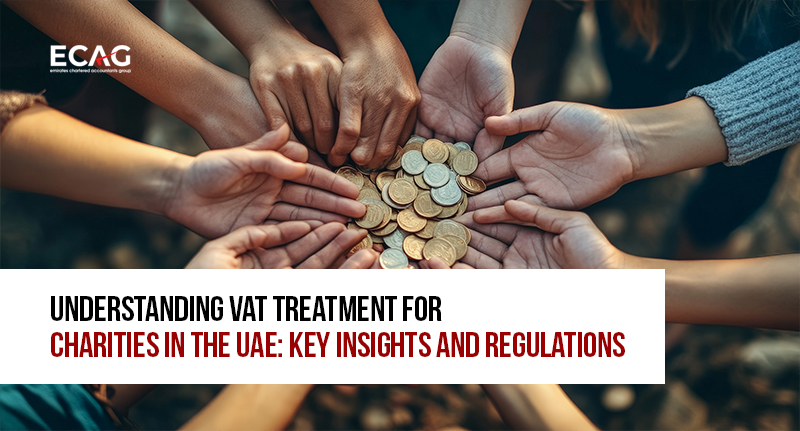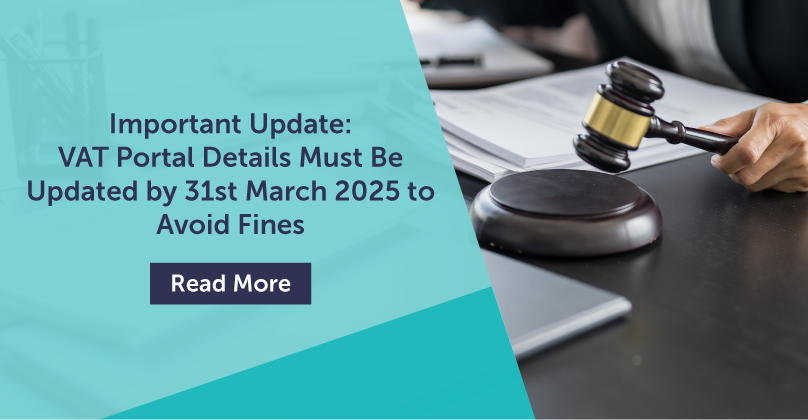
Understanding VAT Treatment for Charities in the UAE: Key Insights and Regulations
Charities in the UAE are subject to UAE VAT. They may offer a variety of goods and services, each with different VAT implications unless it is not a relevant charitable activity. They can recover VAT on expenses related to their activities according to standard VAT recovery rules.
However, VAT applies to donated goods and services. Charities must comply with Decree-Law No. 20 of 2018, its implementing regulations, Cabinet Decision 10 of 2019, and any relevant guidelines issued by the UAE Central Bank concerning Anti-Money Laundering (AML) and Combating the Financing of Terrorism (CFT).
Regarding tax liability on free supplies, if a charity provides goods or services at no charge and no VAT is applied, it generally is not liable for VAT unless the supply is classified as a deemed supply. VAT cannot be recovered on the direct costs incurred to receive such free provisions for grants and donations.
-
Approval and Licensing: Charities must be:
- Approved by the Ministry of Community Development to operate in the UAE, or
- Established under Federal or Emirate Decree, or
- Licensed by a relevant government agency with the authority to grant such licenses, with objectives including health, education, public welfare, religion, culture, science, and similar activities.
-
Operational Requirements:
- The charity must operate according to the terms of its approval, license, or other authorization.
- It must operate on a not-for-profit basis and be funded primarily through grants or donations.
- The charity must perform only the activities for which it is licensed.
- Trading activities incidental to its charitable objectives are allowed if they do not generate profit or if any profit is used for charitable purposes.
- The charity must be managed by individuals deemed ‘fit and proper,’ with considerations including the absence of tax fraud or other fraudulent behaviour
VAT Registration for Charities
Charities operating a business in the UAE and making taxable supplies exceeding the mandatory VAT registration threshold must apply for VAT registration. If their taxable expenses surpass the registration threshold, they should also apply for VAT registration.
Designated charities are required to register for VAT to recover input tax, regardless of whether they meet the VAT registration threshold.
Charities also have the option to register as a tax group with other entities. However, a designated charity can only form or join a tax group that consists solely of other designated charities.
For Charity building supplies, the initial supply of a charity building is zero-rated, whereas any subsequent supplies are standard-rated.
VAT recovery rules for charities
A Charity can be classified as a designated and non-designated charity. Input tax recovery rules are different for charities based on the nature of the institution.
VAT recovery by charities which are not designated charities
A charitable institution making taxable supplies is normally eligible for recovering the input vat incurred on their taxable supplies except for exempt supplies. Article 53 of the executive regulation of the decree law specifically declares the input tax which is not recoverable by the non-designated charities. In order to identify the recoverable portion of input incurred for the expenses commonly used for both taxable and exempt or non-taxable supplies, the charity needs to undergo VAT apportionment calculations.
The following method of standard input apportionment should be followed by the charity to apportion the input tax incurred for taxable and non-taxable supplies.
- Direct Attribution
The charity should apportion the expenses as recoverable and non-recoverable, which is incurred on both taxable and non-taxable supplies. Some of the expenses are listed below.
- Legal fee incurred to the charity for providing free services
- VAT is incurred on purchasing goods and services which are further sold to raise funds for performing charitable activities.
- Legal charges incurred in connection with the sale of bare land
Audit fee
From the above-mentioned examples, it is understood that the charity may incur expenses which is wholly attributable for taxable supplies, partly attributable for taxable supplies and non-taxable supplies and fully attributable for non-taxable supplies/exempt supplies. The portion of input which is used for making both taxable and non-taxable supplies is called residual input tax.
The charity can request the authority for change in the use of apportionment method other than the standard method and the authority should approve the same in writing.
2.Calculating the recoverable portion from the residual input tax
As mentioned in the first step, the charity should identify all its inputs and distinguish it as taxable, non-taxable and residual input. Only that portion of input tax which is residual should be apportioned. For that the following steps have to be taken.
1) Determine the percentage of recoverable input tax by applying the following formula.
Percentage of Recovery= Input tax incurred on taxable supplies
-----------------------------------------------------------------
Input tax incurred on taxable supplies+ Input tax incurred on non-taxable supplies
2) Find out the recoverable portion of input tax from the residual input by applying the percentage of recovery.
The proportion of residual attributable to supplies for which input tax is recoverable (R2 = Residual input tax X Percentage of Recovery
3. Annual Adjustment
Charitable institutions who undergo the process of calculating the recoverable portion from the residual input, have to calculate the portion of the residual input for the year using the same formula which is used for monthly or quarterly return. This is called the annual adjustment treatment, and the charity have to do this adjustment in the first tax return of the following tax period.
Annual adjustment is done to determine whether there is any remarkable difference between the overall recovery percentage for the tax year and percentage calculated on tax periods during the tax year. If the difference calculated between the total of recoverable input tax (tax period) and the total input tax which would have been recovered (tax year) is more than 250,000, then the charity should do the adjustment in the first tax return following the relevant tax year. Otherwise, no adjustment is required.
VAT recovery by a designated Charity
A designated charity means any charity approved by the Ministry of Community Development or established as a charity under the Federal or Emirate Decree. Like the vat recovery of non-designated charity, only those expenses incurred for making taxable supplies are eligible for VAT recovery. For expenses incurred both for taxable and non-taxable supplies, a vat apportionment is required.
Similar to non-designated charities the same steps have to be followed for input tax apportionment of designated charity.
- Determine the value of input tax and distinguish it as fully recoverable(T), non-recoverable(E) and Input tax which is attributable to other non-taxable supplies / activities (C) may be recovered in full due to the special VAT recovery scheme.
- The below formula should be applied to determine the recoverable portion of input tax (R2) from the residual(R)
R2 = T+C
T+C+E
- The total recoverable input tax will be the total of T, C and R2
- Annual adjustment
Designated charities - List of Cabinet decisions
- Cabinet Decision No. 55 of 2017 on Charities that May Recover Input Tax;
- Cabinet Decision No. 15 of 2018 on Amending the List of Charities Annexed to the Cabinet Decision No. 55 of 2017 on Charities That May Recover Input Tax.
- Cabinet Decision No. 46 of 2018 on Amending the List of Charities Annexed to the Cabinet Decision No 55 of 2017 on Charities That May Recover Input Tax (effective from 14 October 2018)
- Cabinet Decision No. 25 of 2019 on Amending the List of Charities Annexed to the Cabinet Decision No 55 of 2017 on Charities That May Recover Input Tax (effective from 1 April 2019).
- Cabinet Decision No. 13 of 2020 on Amending the List of Charities Annexed to the Cabinet Decision No 55 of 2017 on Charities That May Recover Input Tax (effective from 2 March 2020).




